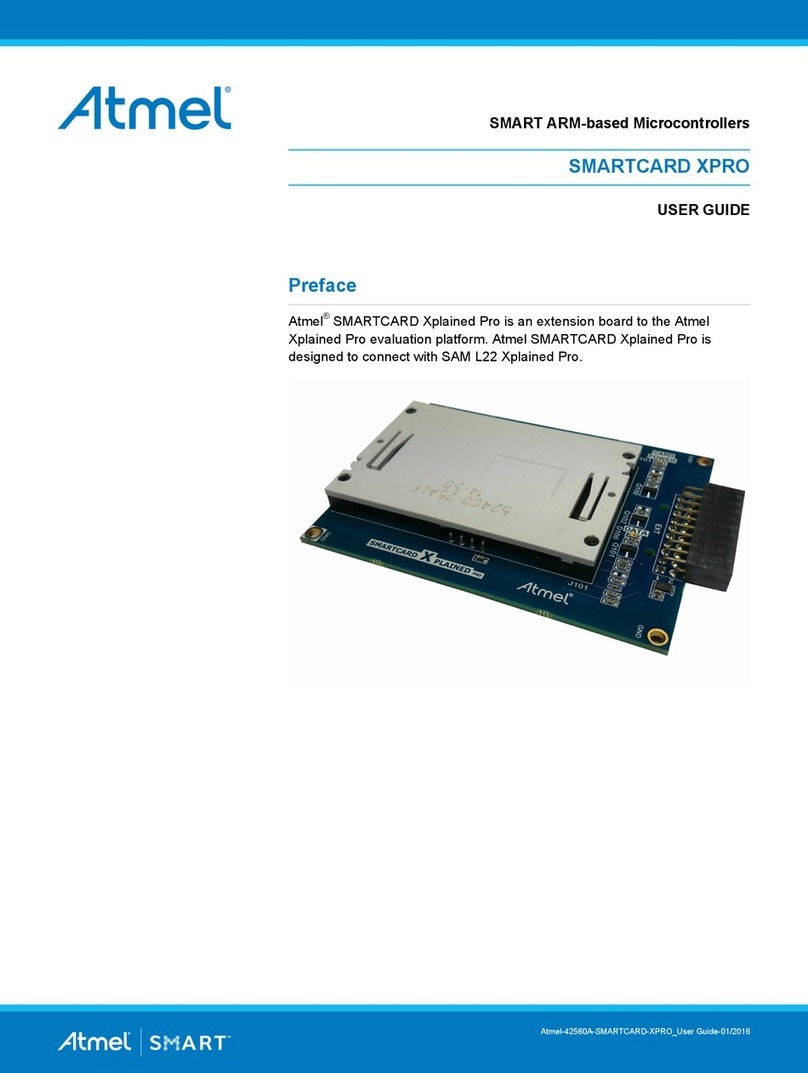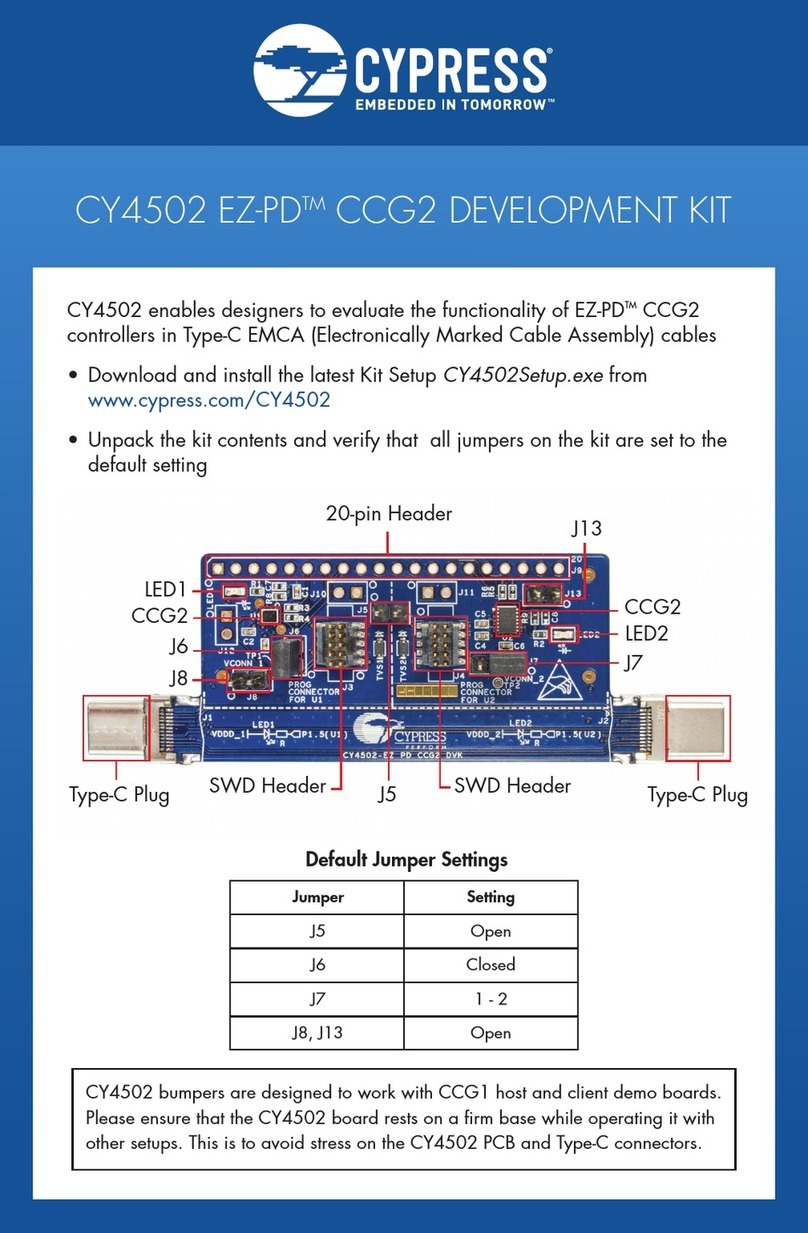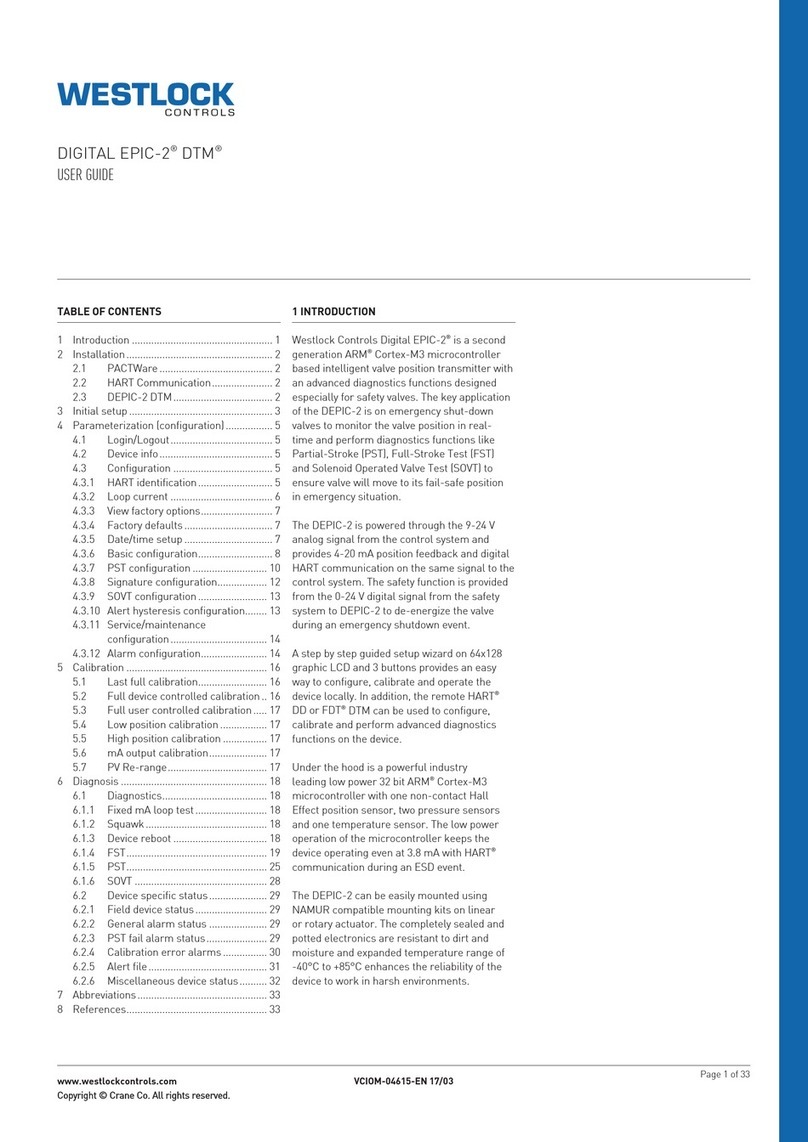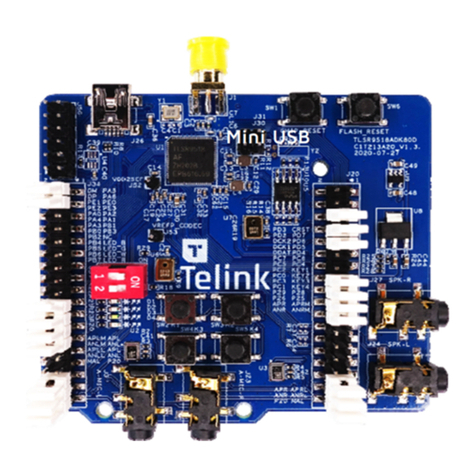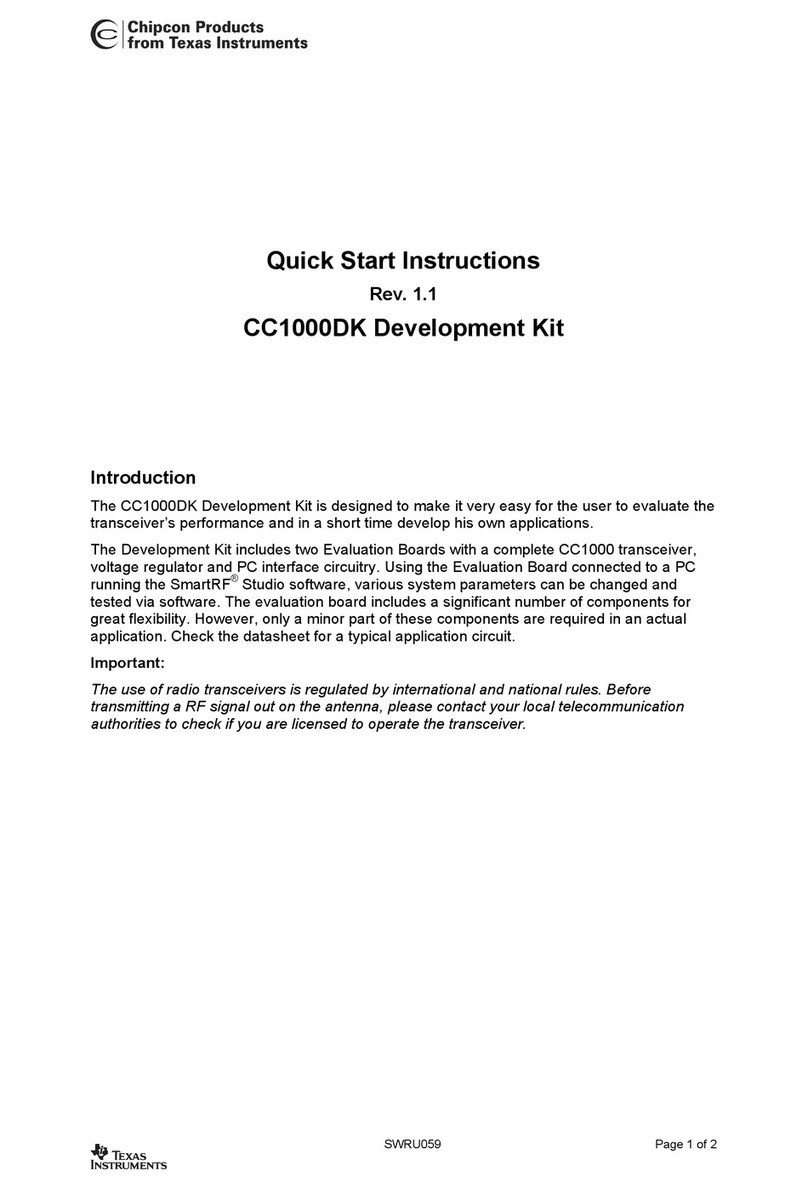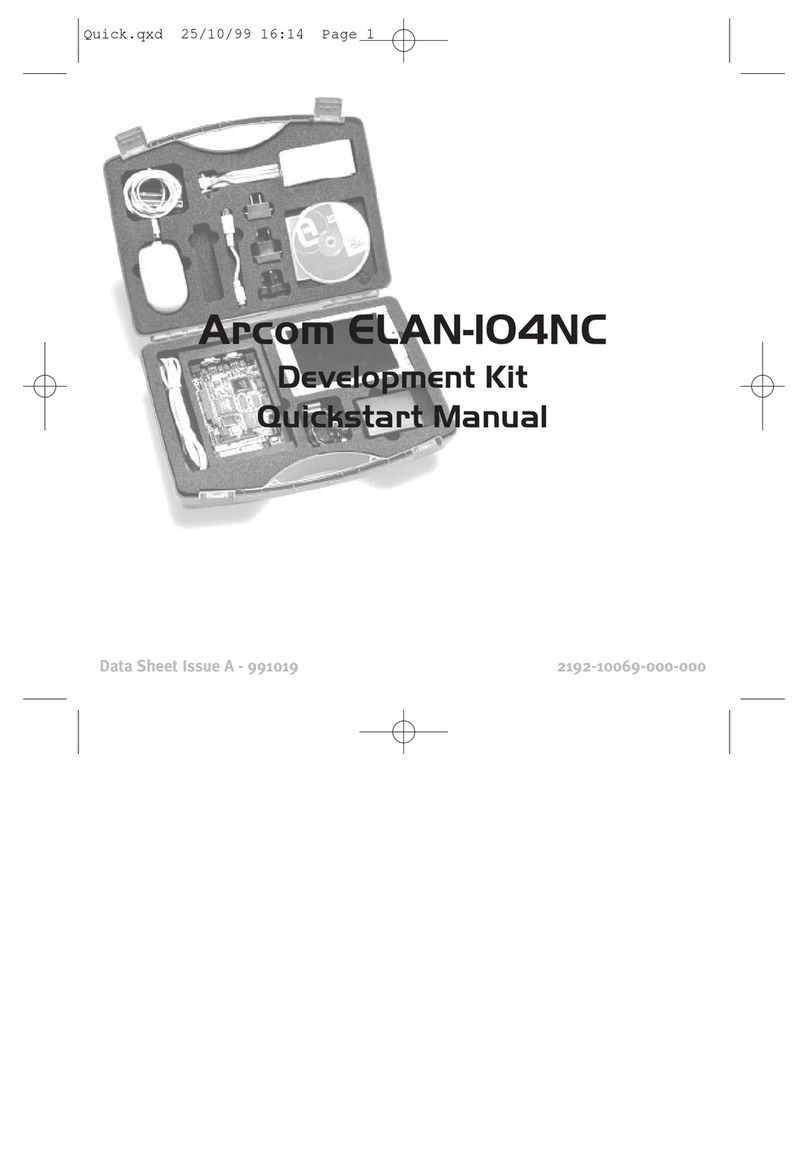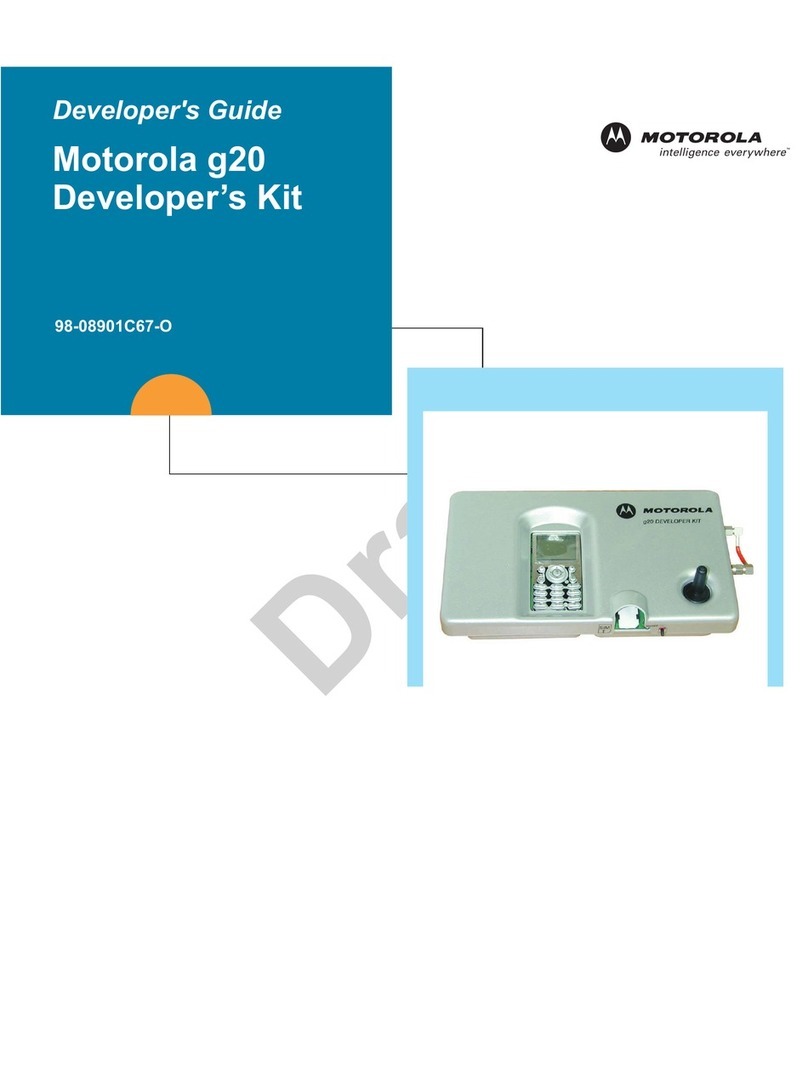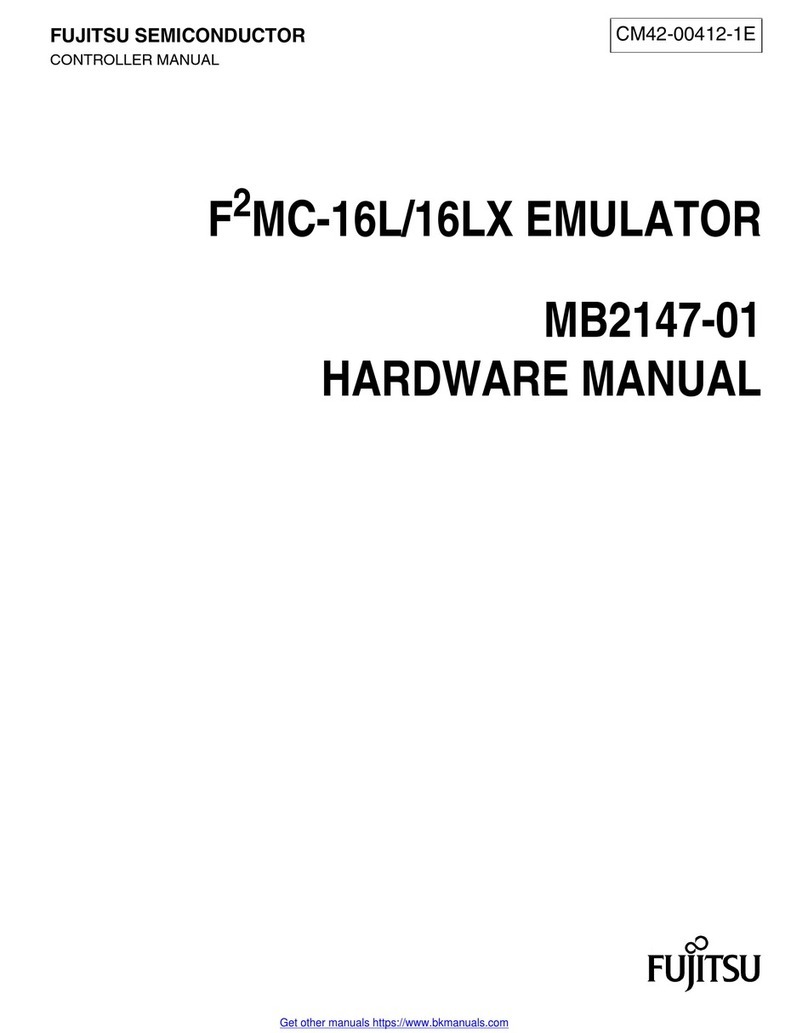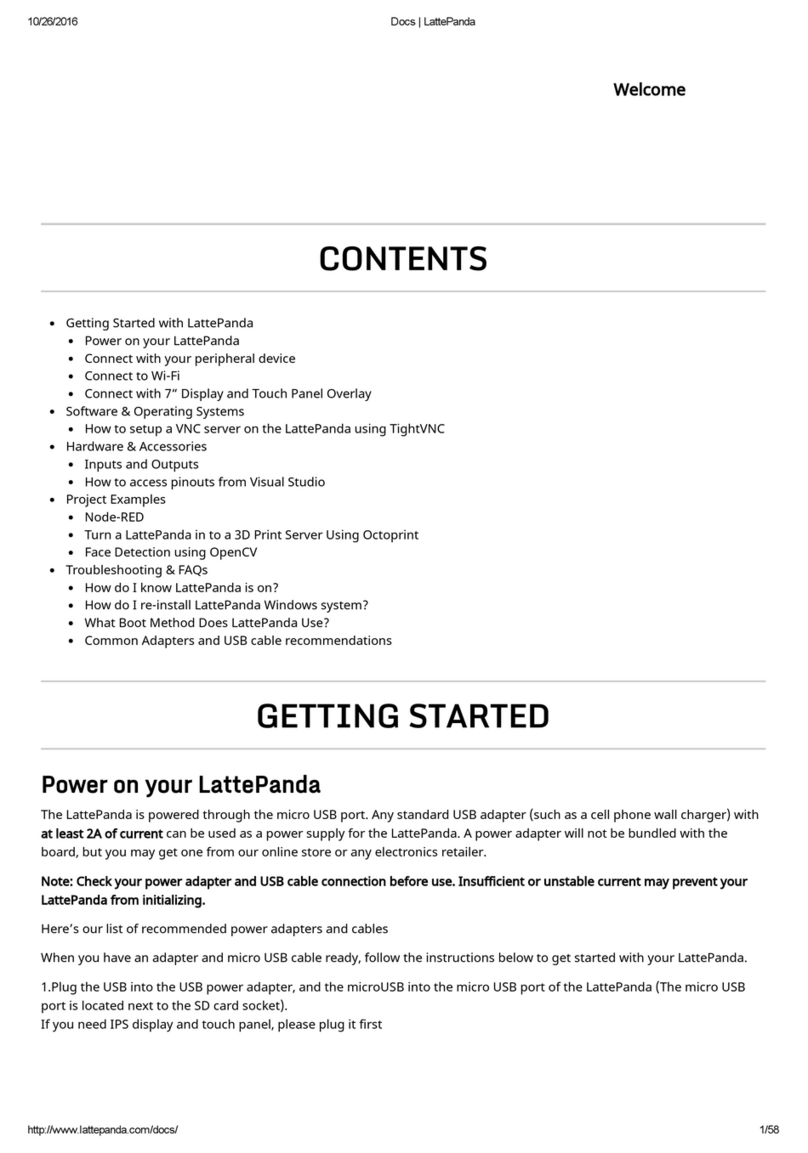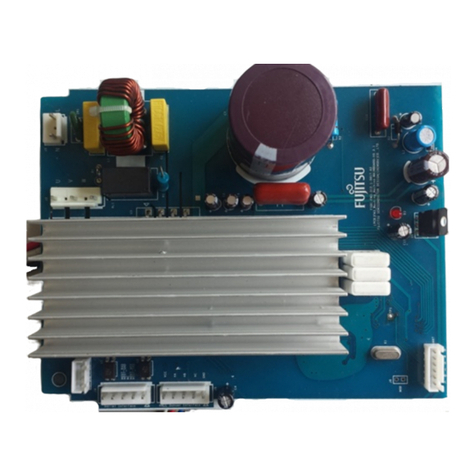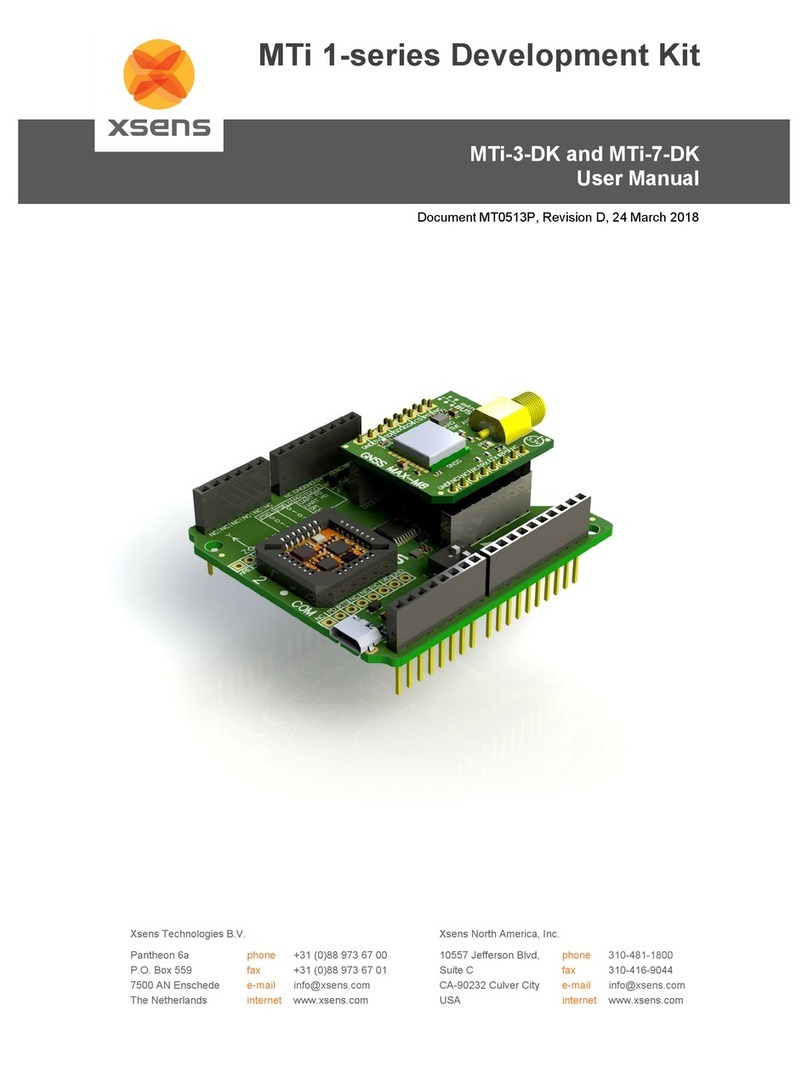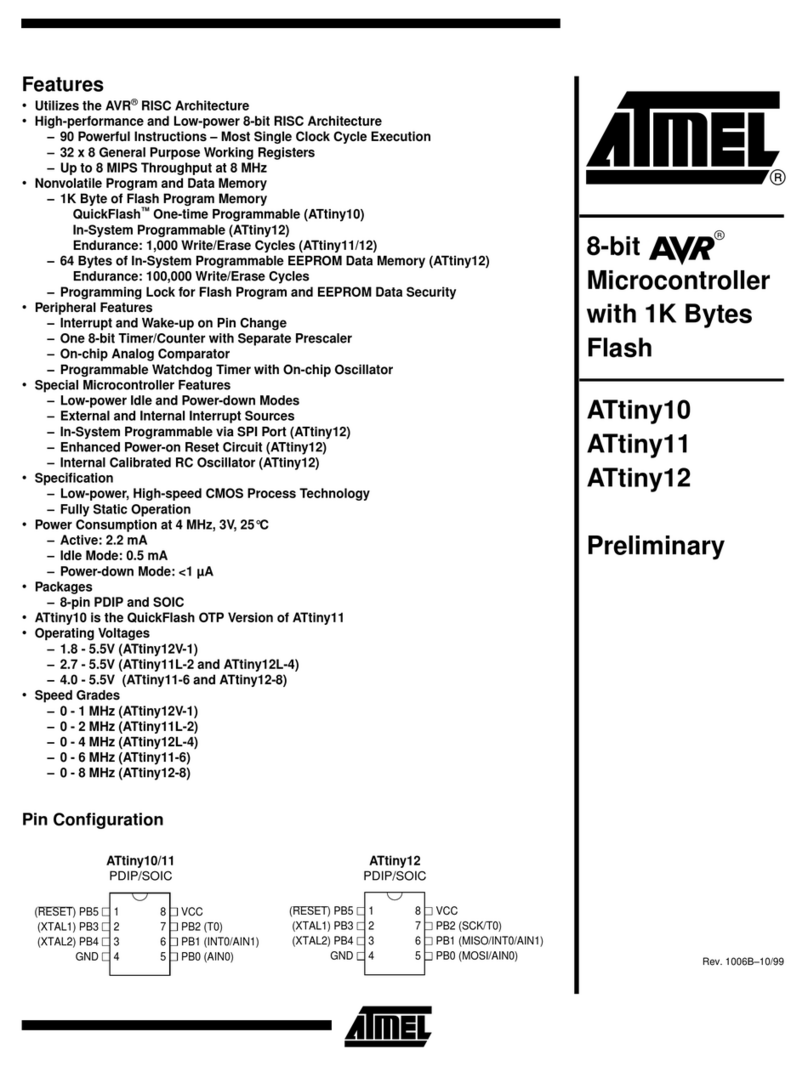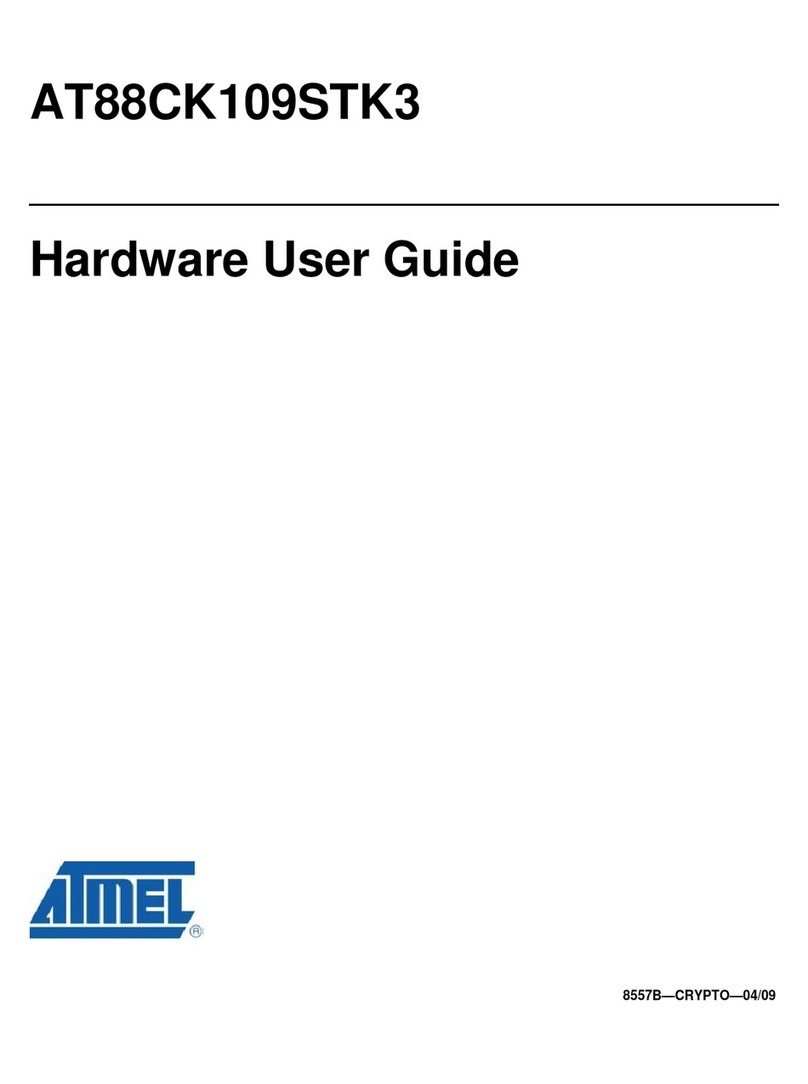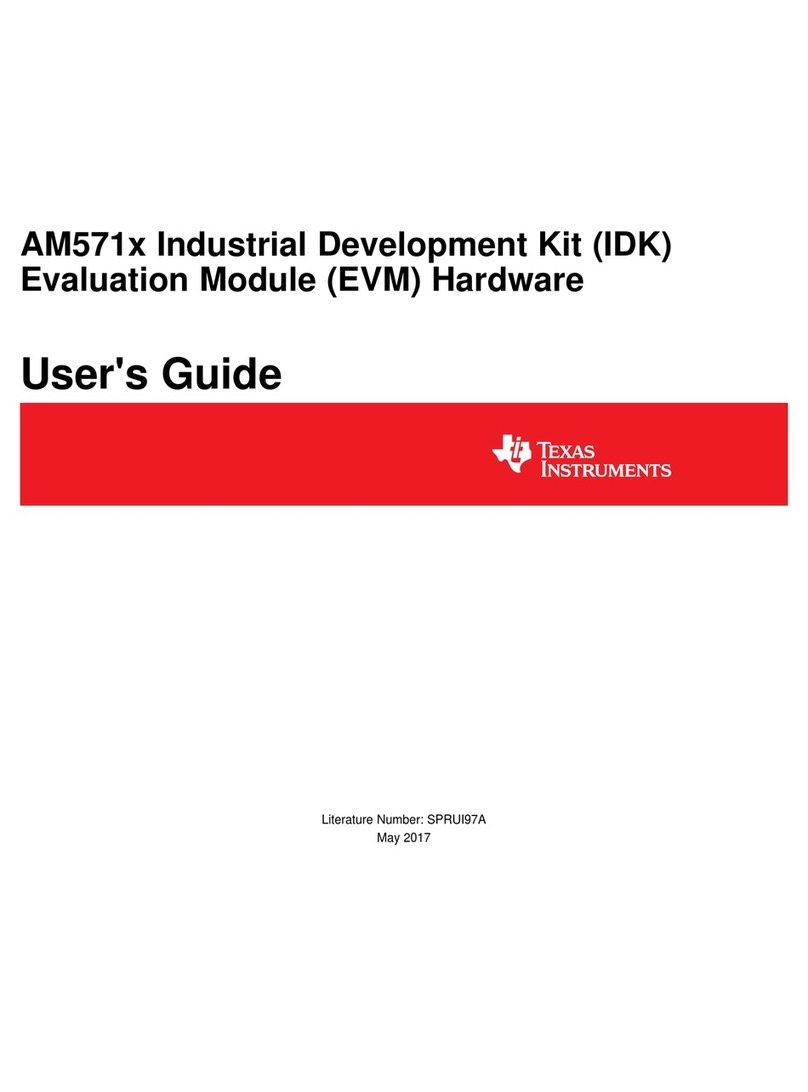TQ Ma7x User manual

TQMa7x
User's Manual
TQMa7x UM 0203
07.01.2022

User's Manual l TQMa7x UM 0203 l © 2022, TQ-Systems GmbH Page i
TABLE OF CONTENTS
1. ABOUT THIS MANUAL................................................................................................................................................................................1
1.1 Copyright and license expenses.............................................................................................................................................................1
1.2 Registered trademarks...............................................................................................................................................................................1
1.3 Disclaimer......................................................................................................................................................................................................1
1.4 Imprint............................................................................................................................................................................................................1
1.5 Tips on safety................................................................................................................................................................................................2
1.6 Symbols and typographic conventions ...............................................................................................................................................2
1.7 Handling and ESD tips...............................................................................................................................................................................2
1.8 Naming of signals........................................................................................................................................................................................3
1.9 Further applicable documents / presumed knowledge .................................................................................................................3
2. BRIEF DESCRIPTION ....................................................................................................................................................................................4
2.1 Block diagram i.MX7D................................................................................................................................................................................4
2.2 Key functions and characteristics...........................................................................................................................................................5
3. ELECTRONICS................................................................................................................................................................................................6
3.1 Interfaces to other systems and devices..............................................................................................................................................6
3.1.1 Pin multiplexing ..........................................................................................................................................................................................6
3.1.2 Pinout..............................................................................................................................................................................................................7
3.2 System components................................................................................................................................................................................ 11
3.2.1 i.MX7............................................................................................................................................................................................................. 11
3.2.1.1 i.MX7 derivatives ...................................................................................................................................................................................... 11
3.2.1.2 eFuses .......................................................................................................................................................................................................... 11
3.2.1.3 i.MX7 errata................................................................................................................................................................................................ 11
3.2.1.4 Boot modes................................................................................................................................................................................................ 11
3.2.1.5 Boot configuration................................................................................................................................................................................... 12
3.2.1.6 Boot interfaces.......................................................................................................................................................................................... 13
3.2.1.7 Boot device eMMC................................................................................................................................................................................... 13
3.2.1.8 Boot device QSPI NOR flash .................................................................................................................................................................. 14
3.2.1.9 Boot device SD card................................................................................................................................................................................. 15
3.2.2 Memory....................................................................................................................................................................................................... 16
3.2.2.1 DDR3L SDRAM........................................................................................................................................................................................... 16
3.2.2.2 eMMC NAND flash.................................................................................................................................................................................... 16
3.2.2.3 QSPI NOR flash .......................................................................................................................................................................................... 17
3.2.2.4 EEPROM M24C64...................................................................................................................................................................................... 18
3.2.3 RTC................................................................................................................................................................................................................ 19
3.2.3.1 i.MX7 RTC.................................................................................................................................................................................................... 19
3.2.3.2 RTC DS1339U............................................................................................................................................................................................. 20
3.2.4 Temperature sensor ................................................................................................................................................................................ 21
3.2.5 Interfaces .................................................................................................................................................................................................... 22
3.2.5.1 Overview..................................................................................................................................................................................................... 22
3.2.5.2 ADC............................................................................................................................................................................................................... 23
3.2.5.3 CCM .............................................................................................................................................................................................................. 24
3.2.5.4 ECSPI............................................................................................................................................................................................................. 24
3.2.5.5 ENET.............................................................................................................................................................................................................. 25
3.2.5.6 FLEXCAN ..................................................................................................................................................................................................... 26
3.2.5.7 GPIO.............................................................................................................................................................................................................. 26
3.2.5.8 I2C .................................................................................................................................................................................................................. 27
3.2.5.9 LCD ............................................................................................................................................................................................................... 28
3.2.5.10 MIPI CSI........................................................................................................................................................................................................ 29
3.2.5.11 MIPI DSI ....................................................................................................................................................................................................... 29
3.2.5.12 PCIe............................................................................................................................................................................................................... 29
3.2.5.13 PWM ............................................................................................................................................................................................................. 29
3.2.5.14 QSPI .............................................................................................................................................................................................................. 30
3.2.5.15 SAI ................................................................................................................................................................................................................. 30
3.2.5.16 SIM ................................................................................................................................................................................................................ 30
3.2.5.17 SJC / JTAG................................................................................................................................................................................................... 31
3.2.5.18 TAMPER ....................................................................................................................................................................................................... 31
3.2.5.19 UART............................................................................................................................................................................................................. 32
3.2.5.20 USB................................................................................................................................................................................................................ 33
3.2.5.21 uSDHC.......................................................................................................................................................................................................... 34
3.2.5.22 WDOG .......................................................................................................................................................................................................... 35
3.2.6 Reset............................................................................................................................................................................................................. 35

User's Manual l TQMa7x UM 0203 l © 2022, TQ-Systems GmbH Page ii
3.2.7 Power supply............................................................................................................................................................................................. 36
3.2.7.1 TQMa7x power supply............................................................................................................................................................................ 36
3.2.7.2 Other TQMa7x supply inputs................................................................................................................................................................ 36
3.2.7.3 Provided TQMa7x-internal voltages................................................................................................................................................... 37
3.2.7.4 TQMa7x power consumption............................................................................................................................................................... 37
3.2.7.5 Voltage monitoring ................................................................................................................................................................................. 38
3.2.7.6 Power-Up sequence TQMa7x / carrier board .................................................................................................................................. 38
3.2.7.7 Standby ....................................................................................................................................................................................................... 39
3.2.7.8 PMIC ............................................................................................................................................................................................................. 40
4. MECHANICS................................................................................................................................................................................................ 41
4.1 Connectors................................................................................................................................................................................................. 41
4.2 TQMa7x dimensions................................................................................................................................................................................ 42
4.3 TQMa7x component placement.......................................................................................................................................................... 43
4.4 Adaptation to the environment .......................................................................................................................................................... 44
4.5 Protection against external effects..................................................................................................................................................... 44
4.6 Thermal management............................................................................................................................................................................ 44
4.7 Structural requirements......................................................................................................................................................................... 44
4.8 Notes of treatment................................................................................................................................................................................... 44
5. SOFTWARE.................................................................................................................................................................................................. 45
6. SAFETY REQUIREMENTS AND PROTECTIVE REGULATIONS......................................................................................................... 46
6.1 EMC............................................................................................................................................................................................................... 46
6.2 ESD................................................................................................................................................................................................................ 46
6.3 Operational safety and personal security......................................................................................................................................... 46
6.4 Reliability and service life....................................................................................................................................................................... 46
6.5 Climate and operational conditions................................................................................................................................................... 47
6.6 Shock and Vibration ................................................................................................................................................................................ 47
7. ENVIRONMENT PROTECTION................................................................................................................................................................ 48
7.1 RoHS ............................................................................................................................................................................................................. 48
7.2 WEEE®.......................................................................................................................................................................................................... 48
7.3 REACH®........................................................................................................................................................................................................ 48
7.4 EuP ................................................................................................................................................................................................................ 48
7.5 Battery.......................................................................................................................................................................................................... 48
7.6 Packaging ................................................................................................................................................................................................... 48
7.7 Other entries.............................................................................................................................................................................................. 48
8. APPENDIX ................................................................................................................................................................................................... 49
8.1 Acronyms and definitions...................................................................................................................................................................... 49
8.2 References.................................................................................................................................................................................................. 51

User's Manual l TQMa7x UM 0203 l © 2022, TQ-Systems GmbH Page iii
TABLE DIRECTORY
Table 1: Terms and conventions.............................................................................................................................................................................2
Table 2: Default interfaces ........................................................................................................................................................................................5
Table 3: Pinout connector X1...................................................................................................................................................................................7
Table 4: Pinout connector X2...................................................................................................................................................................................8
Table 5: Pinout connector X3 (only TQMa7S) .....................................................................................................................................................9
Table 6: Pinout connector X3 (only TQMa7D) ................................................................................................................................................. 10
Table 7: i.MX7 derivatives ...................................................................................................................................................................................... 11
Table 8: Boot modes and BT_FUSE_SEL............................................................................................................................................................ 12
Table 9: General boot settings ............................................................................................................................................................................. 12
Table 10: Boot configuration eMMC at uSDHC3 ............................................................................................................................................... 13
Table 11: Boot configuration QSPI NOR flash at QSPI...................................................................................................................................... 14
Table 12: Boot configuration SD card at uSDHC1............................................................................................................................................. 15
Table 13: USDHC3 eMMC modes........................................................................................................................................................................... 17
Table 14: TQMa7x-specific data in the EEPROM................................................................................................................................................ 19
Table 15: Current consumption i.MX7 RTC at LICELL....................................................................................................................................... 19
Table 16: Current consumption DS1339U on TQMa7x at LICELL................................................................................................................. 20
Table 17: EEPROM SE97BTP ..................................................................................................................................................................................... 21
Table 18: TQMa7x-internally used interfaces..................................................................................................................................................... 22
Table 19: Primarily multiplexed interfaces.......................................................................................................................................................... 22
Table 20: ADC............................................................................................................................................................................................................... 23
Table 21: CCM .............................................................................................................................................................................................................. 24
Table 22: ECSPI1and ECSPI2 .................................................................................................................................................................................... 24
Table 23: ENET1 and ENET2 ..................................................................................................................................................................................... 25
Table 24: FLEXCAN ..................................................................................................................................................................................................... 26
Table 25: GPIO.............................................................................................................................................................................................................. 26
Table 26: I2C signals.................................................................................................................................................................................................... 27
Table 27: I2C address assignment .......................................................................................................................................................................... 27
Table 28: LCD interface ............................................................................................................................................................................................. 28
Table 29: MIPI CSI........................................................................................................................................................................................................ 29
Table 30: MIPI DSI ....................................................................................................................................................................................................... 29
Table 31: PCIe interface............................................................................................................................................................................................. 29
Table 32: PWM ............................................................................................................................................................................................................. 29
Table 33: QSPI .............................................................................................................................................................................................................. 30
Table 34: SAI interface............................................................................................................................................................................................... 30
Table 35: SIM interface .............................................................................................................................................................................................. 30
Table 36: JTAG modes ............................................................................................................................................................................................... 31
Table 37: JTAG.............................................................................................................................................................................................................. 31
Table 38: TAMPER ....................................................................................................................................................................................................... 31
Table 39: UARTs........................................................................................................................................................................................................... 32
Table 40: USB OTG1.................................................................................................................................................................................................... 33
Table 41: USB OTG2.................................................................................................................................................................................................... 33
Table 42: USB HSIC ..................................................................................................................................................................................................... 33
Table 43: uSDHC1 ....................................................................................................................................................................................................... 34
Table 44: WDOG .......................................................................................................................................................................................................... 35
Table 45: Reset............................................................................................................................................................................................................. 35
Table 46: TQMa7x Supply inputs ........................................................................................................................................................................... 36
Table 47: Provided TQMa7x-internal voltages................................................................................................................................................... 37
Table 48: Parameter TQMa7x power consumption @ 5 V.............................................................................................................................. 37
Table 49: PMIC ............................................................................................................................................................................................................. 40
Table 50: Connectors assembled on the TQMa7x ............................................................................................................................................ 41
Table 51: Suitable carrier board mating connectors........................................................................................................................................ 41
Table 52: Labels on TQMa7x revision 02xx ......................................................................................................................................................... 43
Table 53: Climate and operational conditions industrial temperature range ......................................................................................... 47
Table 54: Shock resistance ....................................................................................................................................................................................... 47
Table 55: Vibration resistance................................................................................................................................................................................. 47
Table 56: Acronyms.................................................................................................................................................................................................... 49
Table 57: Further applicable documents............................................................................................................................................................. 51

User's Manual l TQMa7x UM 0203 l © 2022, TQ-Systems GmbH Page iv
ILLUSTRATION DIRECTORY
Figure 1: Block diagram i.MX7D................................................................................................................................................................................4
Figure 2: Block diagram TQMa7x (simplified).......................................................................................................................................................6
Figure 3: Block diagram DDR3L SDRAM interface............................................................................................................................................ 16
Figure 4: Block diagram eMMC interface............................................................................................................................................................ 16
Figure 5: Block diagram QSPI NOR flash interface ........................................................................................................................................... 17
Figure 6: Block diagram external QSPI NOR flash interface .......................................................................................................................... 18
Figure 7: Block diagram EEPROM interface........................................................................................................................................................ 18
Figure 8: Block diagram i.MX7 RTC supply......................................................................................................................................................... 19
Figure 9: Block diagram DS1339U RTC on TQMa7x......................................................................................................................................... 20
Figure 10: Block diagram temperature sensor interface SE97BTP ................................................................................................................ 21
Figure 11: Block diagram ADC.................................................................................................................................................................................. 23
Figure 12: Block diagram SD card interface.......................................................................................................................................................... 34
Figure 13: Block diagram Watchdog ...................................................................................................................................................................... 35
Figure 14: Block diagram Reset................................................................................................................................................................................ 35
Figure 15: Block diagram TQMa7x power supply............................................................................................................................................... 36
Figure 16: Block diagram Supervisor VCC5V........................................................................................................................................................ 38
Figure 17: Block diagram 3.3 V supply on carrier board................................................................................................................................... 38
Figure 18: Block diagram PMIC interface .............................................................................................................................................................. 40
Figure 19: TQMa7x dimensions, side view............................................................................................................................................................ 42
Figure 20: TQMa7x dimensions, top view............................................................................................................................................................. 42
Figure 21: TQMa7x dimensions, top view
through
TQMa7x.......................................................................................................................... 42
Figure 22: TQMa7x, component placement top, revision 02xx ..................................................................................................................... 43
Figure 23: TQMa7x, component placement bottom, revision 02xx ............................................................................................................. 43

User's Manual l TQMa7x UM 0203 l © 2022, TQ-Systems GmbH Page v
REVISION HISTORY
Rev. Date Name Pos. Modification
0100 01.08.2017 Petz First issue
0200 22.02.2018 Petz All Complete rework
0201 04.06.2018 Petz
All
1.9
3.2.2.2
Table 14, 3.2.4
3.2.4.1, 3.2.4.2
3.2.5
4.1, 6.6
Typo, formatting, external links updated
“IMX7DCEC Data Sheet” added
Warning extended
Updated
Added
Removed
Updated
0202 24.10.2018 Petz
All
3.2.5.4
3.2.7.4
3.2.5.9, 3.2.7.6
Table 60
Formatting, links updated
Power domain added
Information added
Warnings updated
“Package temperature” replaced with “Case temperature”
Case temperature DDR3L SDRAM changed to +95 °C
0203 07.01.2022 Kreuzer All Complete rework for TQMa7x hardware revision 0200


User's Manual l TQMa7x UM 0203 l © 2022, TQ-Systems GmbH Page 1
1.
ABOUT THIS MANUAL
1.1
Copyright and license expenses
Copyright protected © 2022 by TQ-Systems GmbH.
This User's Manual may not be copied, reproduced, translated, changed or distributed, completely or partially in electronic,
machine readable, or in any other form without the written consent of TQ-Systems GmbH.
The drivers and utilities for the components used as well as the BIOS are subject to the copyrights of the respective
manufacturers. The licence conditions of the respective manufacturer are to be adhered to.
Bootloader-licence expenses are paid by TQ-Systems GmbH and are included in the price.
Licence expenses for the operating system and applications are not taken into consideration and must be calculated / declared
separately.
1.2
Registered trademarks
TQ-Systems GmbH aims to adhere to copyrights of all graphics and texts used in all publications, and strives to use original
or license-free graphics and texts.
All brand names and trademarks mentioned in this User's Manual, including those protected by a third party, unless specified
otherwise in writing, are subjected to the specifications of the current copyright laws and the proprietary laws of the present
registered proprietor without any limitation. One should conclude that brand and trademarks are rightly protected by a third
party.
1.3
Disclaimer
TQ-Systems GmbH does not guarantee that the information in this User's Manual is up-to-date, correct, complete or of good
quality. Nor does TQ-Systems GmbH assume guarantee for further usage of the information. Liability claims against TQ-Systems
GmbH, referring to material or non-material related damages caused, due to usage or non-usage of the information given in this
User's Manual, or due to usage of erroneous or incomplete information, are exempted, as long as there is no proven intentional
or negligent fault of TQ-Systems GmbH.
TQ-Systems GmbH explicitly reserves the rights to change or add to the contents of this User's Manual or parts of it without
special notification.
Important Notice:
Before using the Starterkit MBa7x or parts of the schematics of the MBa7x, you must evaluate it and determine if it is suitable for
your intended application. You assume all risks and liability associated with such use. TQ-Systems GmbH makes no other
warranties including, but not limited to, any implied warranty of merchantability or fitness for a particular purpose. Except where
prohibited by law, TQ-Systems GmbH will not be liable for any indirect, special, incidental or consequential loss or damage
arising from the usage of the Starterkit MBa7x or schematics used, regardless of the legal theory asserted.
1.4
Imprint
TQ-Systems GmbH
Gut Delling, Mühlstraße 2
D-82229 Seefeld
Tel: +49 8153 9308–0
Fax: +49 8153 9308–4223
E-Mail: Info@TQ-Group
Web: TQ-Group

User's Manual l TQMa7x UM 0203 l © 2022, TQ-Systems GmbH Page 2
1.5
Tips on safety
Improper or incorrect handling of the product can substantially reduce its life span.
1.6
Symbols and typographic conventions
Table 1: Terms and conventions
Symbol Meaning
This symbol represents the handling of electrostatic-sensitive modules and / or components. These
components are often damaged / destroyed by the transmission of a voltage higher than about 50 V.
A human body usually only experiences electrostatic discharges above approximately 3,000 V.
This symbol indicates the possible use of voltages higher than 24 V.
Please note the relevant statutory regulations in this regard.
Non-compliance with these regulations can lead to serious damage to your health and may damage
or destroy the component.
This symbol indicates a possible source of danger.
Ignoring the instructions described can cause health damage, or damage the hardware.
This symbol represents important details or aspects for working with TQ-products.
Command
A font with fixed-width is used to denote commands, file names, or menu items.
1.7
Handling and ESD tips
General handling of your TQ-products
The TQ-product may only be used and serviced by certified personnel who have taken note of the
information, the safety regulations in this document and all related rules and regulations.
A general rule is not to touch the TQ-product during operation. This is especially important when
switching on, changing jumper settings or connecting other devices without ensuring beforehand
that the system power supply has been switched off.
Violation of this guideline may result in damage / destruction of the TQMa7x and be dangerous
to your health.
Improper handling of your TQ-product would render the guarantee invalid.
Proper ESD handling
The electronic components of your TQ-product are sensitive to electrostatic discharge (ESD).
Always wear antistatic clothing, use ESD-safe tools, packing materials etc., and operate your TQ-
product in an ESD-safe environment. Especially when you switch modules on, change jumper settings,
or connect other devices.

User's Manual l TQMa7x UM 0203 l © 2022, TQ-Systems GmbH Page 3
1.8
Naming of signals
A hash mark (#) at the end of the signal name indicates a low-active signal.
Example: RESET#
If a signal can switch between two functions and if this is noted in the name of the signal, the low-active function is marked with
a hash mark and shown at the end.
Example: C / D#
If a signal has multiple functions, the individual functions are separated by slashes when they are important for the wiring.
The identification of the individual functions follows the above conventions.
Example: WE2# / OE#
1.9
Further applicable documents / presumed knowledge
•
Specifications and manual of the modules used:
These documents describe the service, functionality and special characteristics of the module used (incl. BIOS).
•
Specifications of the components used:
The manufacturer's specifications of the components used, for example CompactFlash cards, are to be taken note of.
They contain, if applicable, additional information that must be taken note of for safe and reliable operation.
These documents are stored at TQ-Systems GmbH.
•
Chip errata:
It is the user's responsibility to make sure all errata published by the manufacturer of each component are taken note of.
The manufacturer’s advice should be followed.
•
Software behaviour:
No warranty can be given, nor responsibility taken for any unexpected software behaviour due to deficient components.
•
General expertise:
Expertise in electrical engineering / computer engineering is required for the installation and the use of the device.
The following documents are required to fully comprehend the following contents:
•MBa7x circuit diagram
•MBa7x User's Manual
•IMX7DCEC Data Sheet
•IMX7DRM Reference Manual
•U-Boot documentation: www.denx.de/wiki/U-Boot/Documentation
•PTXdist documentation: www.ptxdist.de
•Yocto documentation: www.yoctoproject.org/docs/
•TQ-Support Wiki: Support-Wiki TQMa7x

User's Manual l TQMa7x UM 0203 l © 2022, TQ-Systems GmbH Page 4
2.
BRIEF DESCRIPTION
This User's Manual describes the hardware of the TQMa7x revision 02xx in combination with the MBa7x revision 02xx and also
refers to some software settings.
A certain TQMa7x version does not necessarily provide all features described in this User's Manual. This User's Manual does also
not replace the NXP i.MX7 Reference Manuals (5), (6).
The TQMa7x is a universal Minimodule based on the NXP ARM®i.MX7 CPU. For i.MX7 details, see Table 7.
The Cortex®-A7 cores of these CPUs are clocked with up to 1 GHz.
2.1
Block diagram i.MX7D
Figure 1: Block diagram i.MX7D
(Source: NXP)
The TQMa7x extends the TQC product range and offers an outstanding computing performance.
A suitable i.MX7 derivative (i.MX7Solo, i.MX7Dual) can be selected for each requirement.
All essential i.MX7 pins are routed to the TQMa7x connectors.
There are therefore no restrictions using the TQMa7x with respect to an integrated customised design.
All essential components like i.MX7, DDR3L SDRAM, eMMC, and power management are already integrated on the TQMa7x.
The TQMa7x main features are:
•NXP i.MX7S (Solo) or i.MX7D (Dual), Cortex®-A7 + Cortex®-M4
•Up to 2 Gbyte DDR3L SDRAM with 32 bit interface
•Up to 32 Gbyte eMMC 5.0 NAND flash
•Up to 256 Mbyte Quad-SPI NOR flash (assembly option)
•64 kbit EEPROM
•RTC (assembly option)
•Temperature sensor
•NXP Power Management Integrated Circuit
•All essential i.MX7 pins are routed to the TQMa7x connectors
•Extended temperature range
•Single supply voltage 5 V
The MBa7x also serves as an evaluation board for the TQMa7x.

User's Manual l TQMa7x UM 0203 l © 2022, TQ-Systems GmbH Page 5
2.2
Key functions and characteristics
The following interfaces are provided by default at the TQMa7x connectors. 1
Table 2: Default interfaces
Interface Qty. Remark
ADC 2 4 channels each
CAN 2 FLEXCAN1 / FLEXCAN2
CCM 2 1 × Differential CLK
1 × Single-Ended CLK
ENET / RGMII 2 ENET1: 10/100/1000 Base-T (Ethernet)
ENET2: 10/100/1000 Base-T (Ethernet): only on TQMa7D
GPIO 9 –
I2C 3 I2C1 is used for devices on the TQMa7x
JTAG 1 SJC / JTAG
LCD 1 24 bit RGB parallel
MIPI CSI 1 2 lanes
MIPI DSI 1 2 lanes
PCIe 1 PCIe 2.0: 1 lane; only on TQMa7D
PWM 4 –
QSPI
1
SPI NOR flash (assembly option)
SAI 1 I2S / ESAI
SDHC 1 uSDHC1: 4 bit, SD card UHS-I (SDR104)
SIM 1 ISO-7816 smart card interface
SPI 2 –
TAMPER 10 –
UART 5 9600 to 115200 Baud; 8N1; 4 UARTs with RTS# / CTS#
USB HSIC 1 Host
USB OTG 2 OTG2: Only on TQMa7D
WDOG 1 WDOG output and Reset
With an adapted pin configuration, other i.MX7 interfaces can be used alternatively to the standard configuration.
In essence, these are:
•Parallel CSI interface
•EIM interface
•EPDC interface
•Flexible Timer Module
•General-Purpose Memory Interface
•General-Purpose Timer
•Keypad port
•Medium-Quality Sound module
•More GPIOs
•Additional SIM interface
•More Audio, I2C, SPI and UART interfaces
•More Watchdog Timer
1: Number of interfaces and configuration depend on i.MX7 and TQMa7x derivative.

User's Manual l TQMa7x UM 0203 l © 2022, TQ-Systems GmbH Page 6
3.
ELECTRONICS
The information provided in this User's Manual is only valid in connection with the tailored boot loader,
which is preinstalled on the TQMa7x, and the BSP provided by TQ-Systems, see also chapter 5.
i.MX7S / i.MX7D
DDR3L SDRAM
eMMC
EEPROM
Temperature
sensor
PMIC
PF3000 / PF3001
QSPI NOR flash
(optional)
5 V
Connector 80-pin, 0.8 mm
RTC
(optional)
Connector 120-pin, 0.8 mm
Connector 120-pin, 0.8 mm
Supervisor
DCDC4V2
Figure 2: Block diagram TQMa7x (simplified)
3.1
Interfaces to other systems and devices
3.1.1 Pin multiplexing
The pin assignment listed in Table 3, Table 4, Table 5, and Table 8 refer to the BSP provided by TQ-Systems in combination with
the Starterkit MBa7x. The multiple pin configurations by different i.MX7-internal function units must be taken note of, when the
function of i.MX7 signals is altered.
NXP provides a tool showing the multiplexing and simplifies the selection and configuration (i.MX Pins Tool – NXP Tool).
The electrical and pin characteristics are to be taken from the i.MX7 Data Sheets (1), (2), the i.MX7 Reference Manuals (5), (6),
and the PMIC Data Sheet (4).
Attention: TQMa7x, malfunction or destruction
Depending on the configuration, many i.MX7 pins can provide several different functions.
Please take note of the information in the i.MX7 Reference Manuals (5), (6), concerning the
configuration of these pins before integration or start-up of your carrier board / Starterkit.
Improper programming by operating software can cause malfunctions, deterioration or
destruction of the TQMa7x.
Note: TQMa7S / TQMa7D, pinout
The pinout in chapter 3.1.2 refers to the TQMa7S, the pinout in chapter 3.1.3 refers to the TQMa7D.
The signals at connectors X1 and X2 are identical, some signals at X3 though, have different functions
at the TQMa7S and the TQMa7D.
The descriptions given in the following tables should be taken note of:
−RFU: Reserved for future use. Pin has no function. Do not connect.
−NC: These pins must never be connected and have to be left open.
Please contact TQ-Support for details.

User's Manual l TQMa7x UM 0203 l © 2022, TQ-Systems GmbH Page 7
3.1.2 Pinout
Table 3: Pinout connector X1
Ball Dir. Level Group Signal Pin Signal Group Level Dir. Ball
– Pin 5 V Power VCC5V 1 2 VCC5V Power 5 V Pin –
–
Pin
5 V
Power
VCC5V
3
4
VCC5V
Power
5 V
Pin
–
–
Pin
5 V
Power
VCC5V
5
6
VCC5V
Power
5 V
Pin
–
–
P
0 V
Power
DGND
7
8
DGND
Power
0 V
P
–
–
P
0 V
Power
DGND
9
10
DGND
Power
0 V
P
–
–
P
0 V
Power
DGND
11
12
DGND
Power
0 V
P
–
–
Pout
3.3 V
Power
VCC3V3_V33
13
14
VCC_SD
Power
1.8 V / 3.3 V
Pout
–
–
Pout
3.3 V
Power
VCC3V3_VLDO3
15
16
VSNVS
Power
3.0 V
Pout
–
–
P
0 V
Power
DGND
17
18
DGND
Power
0 V
P
–
–
I
3.0 V
Config
LICELL
19
20
RESET_OUT#
Config
3.3 V
O
–
–
I
3.3 V
Config
PMIC_PWRON
21
22
RESET_IN#
Config
3.3 V
I
–
–
P
0 V
Power
DGND
23
24
IMX_ONOFF
Config
3.3 V
I
AC8
K1
I/O
3.3 V
I2C
I2C1_SDA
25
26
VCC3V3_MB_EN
Power
1.5 V
Pout
–
J2
O
3.3 V
I2C
I2C1_SCL
27
28
RFU
–
–
–
–
–
P
0 V
Power
DGND
29
30
DGND
Power
0 V
P
–
K3
I/O
3.3 V
I2C
I2C2_SDA
31
32
ECSPI1_MOSI
SPI
3.3 V
O
G5
K2
O
3.3 V
I2C
I2C2_SCL
33
34
ECSPI1_MISO
SPI
3.3 V
I
H4
–
P
0 V
Power
DGND
35
36
ECSPI1_SS0#
SPI
3.3 V
O
H5
K6
I/O
3.3 V
I2C
I2C3_SDA
37
38
ECSPI1_SS1#
SPI
3.3 V
O
L3
K5
O
3.3 V
I2C
I2C3_SCL
39
40
ECSPI1_SS2#
SPI
3.3 V
O
L4
–
P
0 V
Power
DGND
41
42
ECSPI1_SS3#
SPI
3.3 V
O
L5
N2
O
3.3 V
PWM
PWM1_OUT
43
44
DGND
Power
0 V
P
–
N3
O
3.3 V
PWM
PWM2_OUT
45
46
ECSPI1_SCLK
SPI
3.3 V
O
H3
–
P
0 V
Power
DGND
47
48
DGND
Power
0 V
P
–
N5
O
3.3 V
PWM
PWM3_OUT
49
50
CCM_CLK1_P
CCM
1.8 V
I/O
Y2
N1
O
3.3 V
WDOG
WDOG1#
51
52
CCM_CLK1_N
CCM
1.8 V
I/O
Y1
–
P
0 V
Power
DGND
53
54
DGND
Power
0 V
P
–
W3
I
1.8 V
CCM
CCM_CLK2
55
56
UART3_CTS#
UART
3.3 V
O
M6
–
P
0 V
Power
DGND
57
58
UART3_RTS#
UART
3.3 V
I
M5
L1
I
3.3 V
UART
UART5_RX
59
60
UART3_RX
UART
3.3 V
I
M1
L2
O
3.3 V
UART
UART5_TX
61
62
UART3_TX
UART
3.3 V
O
M2
–
P
0 V
Power
DGND
63
64
DGND
Power
0 V
P
–
–
Pout
1.8 V
Power
VDDA1P8_SW2
65
66
VCC1V8_IN
Power
1.8 V
Pin
–
–
P
0 V
Power
DGND
67
68
DGND
Power
0 V
P
–
AC1
A
1.8 V
ADC
ADC2_IN0
69
70
ADC1_IN0
ADC
1.8 V
A
AD1
AC2
A
1.8 V
ADC
ADC2_IN1
71
72
ADC1_IN1
ADC
1.8 V
A
AD3
AB1
A
1.8 V
ADC
ADC2_IN2
73
74
ADC1_IN2
ADC
1.8 V
A
AE2
AB2
A
1.8 V
ADC
ADC2_IN3
75
76
ADC1_IN3
ADC
1.8 V
A
AE3
–
P
0 V
Power
DGND
77
78
DGND
Power
0 V
P
–
P4
I
3.3 V
BOOT
BOOT_MODE0
79
80
GPIO1_IO09
GPIO
3.3 V
I/O
R2
P5
I
3.3 V
BOOT
BOOT_MODE1
81
82
GPIO2_IO28
GPIO
3.3 V
I/O
K24
–
P
0 V
Power
DGND
83
84
GPIO2_IO29
GPIO
3.3 V
I/O
K23
U2
I
3.3 V
JTAG
JTAG_TRST#
85
86
GPIO2_IO30
GPIO
3.3 V
I/O
H24
U4
I
3.3 V
JTAG
JTAG_TMS
87
88
GPIO2_IO31
GPIO
3.3 V
I/O
K20
U3
I
3.3 V
JTAG
JTAG_TDI
89
90
GPIO4_IO03
GPIO
3.3 V
I/O
L6
U6
O
3.3 V
JTAG
JTAG_TDO
91
92
GPIO5_IO12
GPIO
3.3 V
I/O
E3
U1
I
3.3 V
JTAG
JTAG_MOD
93
94
GPIO7_IO12
GPIO
3.3 V
I/O
D16
U5
I
3.3 V
JTAG
JTAG_TCK
95
96
GPIO7_IO15
GPIO
3.3 V
I/O
D19
–
P
0 V
Power
DGND
97
98
DGND
Power
0 V
P
–
AA3
I
1.8 V
TAMPER
TAMPER8
99
100
TAMPER9
TAMPER
1.8 V
I
Y3
AA4
I
1.8 V
TAMPER
TAMPER6
101
102
TAMPER7
TAMPER
1.8 V
I
Y4
AA5
I
1.8 V
TAMPER
TAMPER4
103
104
TAMPER5
TAMPER
1.8 V
I
Y5
AB6
I
1.8 V
TAMPER
TAMPER2
105
106
TAMPER3
TAMPER
1.8 V
I
Y7
AA7
I
1.8 V
TAMPER
TAMPER0
107
108
TAMPER1
TAMPER
1.8 V
I
Y8
–
P
0 V
Power
DGND
109
110
DGND
Power
0 V
P
–
M23
I
3.3 V
UART
UART6_RX
111
112
UART7_RX
UART
3.3 V
I
L22
L25
O
3.3 V
UART
UART6_TX
113
114
UART7_TX
UART
3.3 V
O
L21
L23
O
3.3 V
UART
UART6_CTS#
115
116
UART7_CTS#
UART
3.3 V
O
K25
L24
I
3.3 V
UART
UART6_RTS#
117
118
UART7_RTS#
UART
3.3 V
I
L20
–
P
0 V
Power
DGND
119
120
DGND
Power
0 V
P
–

User's Manual l TQMa7x UM 0203 l © 2022, TQ-Systems GmbH Page 8
3.1.2 Pinout (continued)
Table 4: Pinout connector X2
Ball Dir. Level Group Signal Pin Signal Group Level Dir. Ball
– P 0 V Power DGND 1 2 DGND Power 0 V P –
B4
O
1.8 V / 3.3 V
USDHC
SD1_RESET#
3
4
PMIC_SD_VSEL
Config
3.3 V
O
R1
A5
I/O
1.8 V / 3.3 V
USDHC
SD1_DATA0
5
6
SD1_CMD
USDHC
1.8 V / 3.3 V
I/O
C5
A4
I/O
1.8 V / 3.3 V
USDHC
SD1_DATA2
7
8
SD1_DATA1
USDHC
1.8 V / 3.3 V
I/O
D6
B5
O
1.8 V / 3.3 V
USDHC
SD1_CLK
9
10
SD1_DATA3
USDHC
1.8 V / 3.3 V
I/O
D5
–
P
0 V
Power
DGND
11
12
SD1_WP
USDHC
1.8 V / 3.3 V
I
C4
J5
O
3.3 V
SPI
ECSPI2_SCLK
13
14
SD1_CD#
USDHC
1.8 V / 3.3 V
I
C6
H6
I
3.3 V
SPI
ECSPI2_MISO
15
16
DGND
Power
0 V
P
–
N6
I
3.3 V
USB_OTG
USB_OTG1_OC
17
18
ECSPI2_MOSI
SPI
3.3 V
O
G6
P1
I
3.3 V
USB_OTG
USB_OTG1_PWR
19
20
ECSPI2_SS0#
SPI
3.3 V
O
J6
C8
Pin
5 V
Power
USB_OTG1_VBUS
21
22
DGND
Power
0 V
P
–
–
P
0 V
Power
DGND
23
24
USB_OTG1_CHD#
USB_OTG
3.3 V
O
C7
A8
I/O
3.3 V
USB_OTG
USB_OTG1_DN
25
26
USB_OTG1_ID
USB_OTG
3.3 V
I
B7
B8
I/O
3.3 V
USB_OTG
USB_OTG1_DP
27
28
DGND
Power
0 V
P
–
–
P
0 V
Power
DGND
29
30
SAI1_TX_DATA
SAI
3.3 V
O
E11
B12
I/O
3.3 V
HSIC
USB_HOST_STROBE
31
32
SAI1_TX_BCLK
SAI
3.3 V
O
C11
–
P
0 V
Power
DGND
33
34
SAI1_TX_SYNC
SAI
3.3 V
O
D11
A12
I/O
3.3 V
HSIC
USB_HOST_DATA
35
36
DGND
Power
0 V
P
–
–
P
0 V
Power
DGND
37
38
SAI1_RX_DATA
SAI
3.3 V
I
E12
E10
O
3.3 V
SAI
SAI1_MCLK
39
40
SAI1_RX_BCLK
SAI
3.3 V
I
D12
–
P
0 V
Power
DGND
41
42
SAI1_RX_SYNC
SAI
3.3 V
I
C12
D15
O
3.3 V
WDOG
WDOG2#
43
44
DGND
Power
0 V
P
–
E19
I
3.3 V
WDOG
WDOG2_RESET#
45
46
ENET1_MDC
ENET
3.3 V
O
T1
–
P
0 V
Power
DGND
47
48
ENET1_MDIO
ENET
3.3 V
I/O
R5
F16
O
3.3 V
RGMII
RGMII1_TXC
49
50
DGND
Power
0 V
P
–
–
P
0 V
Power
DGND
51
52
RGMII1_RXC
RGMII
3.3 V
I
F15
F17
O
3.3 V
RGMII
RGMII1_TD0
53
54
DGND
Power
0 V
P
–
E17
O
3.3 V
RGMII
RGMII1_TD1
55
56
RGMII1_RD0
RGMII
3.3 V
I
E14
E18
O
3.3 V
RGMII
RGMII1_TD2
57
58
RGMII1_RD1
RGMII
3.3 V
I
F14
D18
O
3.3 V
RGMII
RGMII1_TD3
59
60
RGMII1_RD2
RGMII
3.3 V
I
D13
E16
O
3.3 V
RGMII
RGMII1_TX_CTL
61
62
RGMII1_RD3
RGMII
3.3 V
I
E13
–
P
0 V
Power
DGND
63
64
RGMII1_RX_CTL
RGMII
3.3 V
I
E15
F6
I/O
3.3 V
SIM
SIM_TRXD
65
66
DGND
Power
0 V
P
–
E5
O
3.3 V
SIM
SIM_RST#
67
68
LCD_ENABLE
LCD
3.3 V
O
F25
F5
O
3.3 V
SIM
SIM_SVEN
69
70
DGND
Power
0 V
P
–
E6
O
3.3 V
SIM
SIM_PD
71
72
LCD_CLK
LCD
3.3 V
O
E20
E4
O
3.3 V
SIM
SIM_CLK
73
74
DGND
Power
0 V
P
–
C21
O
3.3 V
LCD
LCD_RESET#
75
76
LCD_HSYNC
LCD
3.3 V
O
E25
–
P
0 V
Power
DGND
77
78
LCD_VSYNC
LCD
3.3 V
O
F24
D21
O
3.3 V
LCD
LCD_DATA00
79
80
DGND
Power
0 V
P
–
B22
O
3.3 V
LCD
LCD_DATA02
81
82
LCD_DATA01
LCD
3.3 V
O
A22
C22
O
3.3 V
LCD
LCD_DATA04
83
84
LCD_DATA03
LCD
3.3 V
O
A23
A24
O
3.3 V
LCD
LCD_DATA06
85
86
LCD_DATA05
LCD
3.3 V
O
B23
–
P
0 V
Power
DGND
87
88
LCD_DATA07
LCD
3.3 V
O
F20
E21
O
3.3 V
LCD
LCD_DATA08
89
90
DGND
Power
0 V
P
–
B24
O
3.3 V
LCD
LCD_DATA10
91
92
LCD_DATA09
LCD
3.3 V
O
C23
F21
O
3.3 V
LCD
LCD_DATA12
93
94
LCD_DATA11
LCD
3.3 V
O
G20
D23
O
3.3 V
LCD
LCD_DATA14
95
96
LCD_DATA13
LCD
3.3 V
O
E22
–
P
0 V
Power
DGND
97
98
LCD_DATA15
LCD
3.3 V
O
C24
B25
O
3.3 V
LCD
LCD_DATA16
99
100
DGND
Power
0 V
P
–
E23
O
3.3 V
LCD
LCD_DATA18
101
102
LCD_DATA17
LCD
3.3 V
O
G21
C25
O
3.3 V
LCD
LCD_DATA20
103
104
LCD_DATA19
LCD
3.3 V
O
D24
D25
O
3.3 V
LCD
LCD_DATA22
105
106
LCD_DATA21
LCD
3.3 V
O
E24
–
P
0 V
Power
DGND
107
108
LCD_DATA23
LCD
3.3 V
O
G23
M20
O
3.3 V
QSPI
QSPI_SCLK
109
110
DGND
Power
0 V
P
–
–
P
0 V
Power
DGND
111
112
QSPI_DATA0
QSPI
3.3 V
I/O
P20
M21
O
3.3 V
QSPI
QSPI_SS0#
113
114
QSPI_DATA1
QSPI
3.3 V
I/O
P21
M22
O
3.3 V
QSPI
QSPI_SS1#
115
116
QSPI_DATA2
QSPI
3.3 V
I/O
N20
N22
O
3.3 V
QSPI
QSPI_RESET#
117
118
QSPI_DATA3
QSPI
3.3 V
I/O
N21
–
P
0 V
Power
DGND
119
120
DGND
Power
0 V
P
–

User's Manual l TQMa7x UM 0203 l © 2022, TQ-Systems GmbH Page 9
3.1.2 Pinout (continued)
Table 5: Pinout connector X3 (only TQMa7S)
Ball Dir. Level Group Signal Pin Signal Group Level Dir. Ball
–
P
0 V
Power
DGND
1
2
DGND
Power
0 V
P
–
T5 I 3.3 V CAN CAN2_RX 3 4 CAN1_RX CAN 3.3 V I T2
T6 O 3.3 V CAN CAN2_TX 5 6 CAN1_TX CAN 3.3 V O T3
– P 0 V Power DGND 7 8 DGND Power 0 V P –
P3 I 3.3 V GPIO GPIO1_IO07 9 10 UART4_CTS# UART 3.3 V O E9
P2 I 3.3 V GPIO GPIO1_IO06 11 12 UART4_RTS# UART 3.3 V I E8
B11 – – NC NC 13 14 UART4_RX UART 3.3 V I D9
– – – NC NC 15 16 UART4_TX UART 3.3 V O D8
– P 0 V Power DGND 17 18 DGND Power 0 V P –
– – – – RFU 19 20 NC NC – – A10
– – – – RFU 21 22 NC NC – – B10
–
–
–
–
RFU
23
24
DGND
Power
0 V
P
–
– – – – RFU 25 26 CSI_D1_N MIPI 1.8 V I A14
– P 0 V Power DGND 27 28 CSI_D1_P MIPI 1.8 V I B14
A18 O 1.8 V MIPI DSI_D1_N 29 30 DGND Power 0 V P –
B18 O 1.8 V MIPI DSI_D1_P 31 32 CSI_CLK_N MIPI 1.8 V I A15
– P 0 V Power DGND 33 34 CSI_CLK_P MIPI 1.8 V I B15
A19 O 1.8 V MIPI DSI_CLK_N 35 36 DGND Power 0 V P –
B19 O 1.8 V MIPI DSI_CLK_P 37 38 CSI_D0_N MIPI 1.8 V I A16
– P 0 V Power DGND 39 40 CSI_D0_P MIPI 1.8 V I B16
A20 O 1.8 V MIPI DSI_D0_N 41 42 DGND Power 0 V P –
B20 O 1.8 V MIPI DSI_D0_P 43 44 TEMP_EVENT# Config (2) O –
– P 0 V Power DGND 45 46 RFU – – – –
D3 I 3.3 V GPIO GPIO5_IO09 47 48 RFU – – – –
C3 I 3.3 V GPIO GPIO5_IO10 49 50 RFU – – – –
–
P
0 V
Power
DGND
51
52
DGND
Power
0 V
P
–
H25 I 3.3 V GPIO GPIO2_IO27 53 54 GPIO2_IO21 GPIO 3.3 V I G24
– P 0 V Power DGND 55 56 DGND Power 0 V P –
H23 I 3.3 V GPIO GPIO2_IO22 57 58 GPIO2_IO16 GPIO 3.3 V I J21
H22 I 3.3 V GPIO GPIO2_IO23 59 60 GPIO2_IO17 GPIO 3.3 V I J20
J25 I 3.3 V GPIO GPIO2_IO24 61 62 GPIO2_IO18 GPIO 3.3 V I H21
J24 I 3.3 V GPIO GPIO2_IO25 63 64 GPIO2_IO19 GPIO 3.3 V I H20
K21 I 3.3 V GPIO GPIO2_IO26 65 66 GPIO2_IO20 GPIO 3.3 V I G25
– P 0 V Power DGND 67 68 DGND Power 0 V P –
AE11 – – NC NC 69 70 NC NC – – AC11
AD11 – – NC NC 71 72 NC NC – – AB11
– P 0 V Power DGND 73 74 DGND Power 0 V P –
AE10
–
–
NC
NC
75
76
NC
NC
–
–
AC10
AD10 – – NC NC 77 78 NC NC – – AB10
– P 0 V Power DGND 79 80 DGND Power 0 V P –
2Active low open-drain output. Maximum pull-up-voltage 3.6 V

User's Manual l TQMa7x UM 0203 l © 2022, TQ-Systems GmbH Page 10
3.1.2
Pinout (continued)
Table 6: Pinout connector X3 (only TQMa7D)
Ball Dir. Level Group Signal Pin Signal Group Level Dir. Ball
– P 0 V Power DGND 1 2 DGND Power 0 V P –
T5 I 3.3 V CAN CAN2_RX 3 4 CAN1_RX CAN 3.3 V I T2
T6 O 3.3 V CAN CAN2_TX 5 6 CAN1_TX CAN 3.3 V O T3
– P 0 V Power DGND 7 8 DGND Power 0 V P –
P3 I 3.3 V USB_OTG USB_OTG2_PWR 9 10 UART4_CTS# UART 3.3 V O E9
P2 I 3.3 V USB_OTG USB_OTG2_OC 11 12 UART4_RTS# UART 3.3 V I E8
B11 I 3.3 V USB_OTG USB_OTG2_ID 13 14 UART4_RX UART 3.3 V I D9
C10 Pin 3.3 V Power USB_OTG2_VBUS 15 16 UART4_TX UART 3.3 V O D8
– P 0 V Power DGND 17 18 DGND Power 0 V P –
– – – – RFU 19 20 USB_OTG2_DN USB_OTG 3.3 V I/O A10
– – – – RFU 21 22 USB_OTG2_DP USB_OTG 3.3 V I/O B10
– – – – RFU 23 24 DGND Power 0 V P –
– – – – RFU 25 26 CSI_D1_N MIPI 1.8 V I A14
– P 0 V Power DGND 27 28 CSI_D1_P MIPI 1.8 V I B14
A18 O 1.8 V MIPI DSI_D1_N 29 30 DGND Power 0 V P –
B18 O 1.8 V MIPI DSI_D1_P 31 32 CSI_CLK_N MIPI 1.8 V I A15
– P 0 V Power DGND 33 34 CSI_CLK_P MIPI 1.8 V I B15
A19 O 1.8 V MIPI DSI_CLK_N 35 36 DGND Power 0 V P –
B19 O 1.8 V MIPI DSI_CLK_P 37 38 CSI_D0_N MIPI 1.8 V I A16
– P 0 V Power DGND 39 40 CSI_D0_P MIPI 1.8 V I B16
A20 O 1.8 V MIPI DSI_D0_N 41 42 DGND Power 0 V P –
B20
O
1.8 V
MIPI
DSI_D0_P
43
44
TEMP_EVENT#
Config
(2)
O
–
– P 0 V Power DGND 45 46 RFU – – – –
D3 I/O 3.3 V ENET ENET2_MDIO 47 48 RFU – – – –
C3 O 3.3 V ENET ENET2_MDC 49 50 RFU – – – –
– P 0 V Power DGND 51 52 DGND Power 0 V P –
H25 O 3.3 V RGMII RGMII2_TXC 53 54 RGMII2_RXC RGMII 3.3 V I G24
– P 0 V Power DGND 55 56 DGND Power 0 V P –
H23 O 3.3 V RGMII RGMII2_TD0 57 58 RGMII2_RD0 RGMII 3.3 V I J21
H22 O 3.3 V RGMII RGMII2_TD1 59 60 RGMII2_RD1 RGMII 3.3 V I J20
J25 O 3.3 V RGMII RGMII2_TD2 61 62 RGMII2_RD2 RGMII 3.3 V I H21
J24 O 3.3 V RGMII RGMII2_TD3 63 64 RGMII2_RD3 RGMII 3.3 V I H20
K21
O
3.3 V
RGMII
RGMII2_TX_CTL
65
66
RGMII2_RX_CTL
RGMII
3.3 V
I
G25
–
P
0 V
Power
DGND
67
68
DGND
Power
0 V
P
–
AE11 I 1.8 V PCIE PCIE_RX_N 69 70 PCIE_TX_N PCIE 1.8 V O AC11
AD11 I 1.8 V PCIE PCIE_RX_P 71 72 PCIE_TX_P PCIE 1.8 V O AB11
– P 0 V Power DGND 73 74 DGND Power 0 V P –
AE10 I 1.8 V PCIE PCIE_REFCLK_IN_N 75 76 PCIE_REFCLK_OUT_N PCIE 1.8 V O AC10
AD10 I 1.8 V PCIE PCIE_REFCLK_IN_P 77 78 PCIE_REFCLK_OUT_P PCIE 1.8 V O AB10
– P 0 V Power DGND 79 80 DGND Power 0 V P –

User's Manual l TQMa7x UM 0203 l © 2022, TQ-Systems GmbH Page 11
3.2
System components
3.2.1 i.MX7
3.2.1.1 i.MX7 derivatives
Depending on the TQMa7x version, one of the following i.MX7 derivatives is assembled.
Table 7: i.MX7 derivatives
CPU Manufacturer number Mask revision CPU clock Temperature range
i.MX7 Solo Industrial MCIMX7S5EVM08SC 1.2 800 MHz –20 °C to +105 °C
i.MX7 Dual Industrial MCIMX7D5EVM10SC 1.2 1000 MHz –20 °C to +105 °C
3.2.1.2 eFuses
The eFuses in the i.MX7 are available for the user, except for the MAC address eFuses.
TQMa7x modules are delivered pre-programmed with MAC addresses from the TQ-Systems MAC address pool. The MAC address
LOCK-FUSE WP (Write Protect) is burnt, which permits to temporarily overwrite the MAC address for test purposes. If this is not
desired, the MAC address LOCK-FUSE OP (Overwrite Protect) can be burned by the user.
3.2.1.3 i.MX7 errata
Attention: Malfunction or destruction
Please take note of the current i.MX7 errata (7).
3.2.1.4 Boot modes
The i.MX7 contains a ROM with integrated boot loader.
After power-up, the boot code initializes the hardware and then loads the program image from the selected boot device. As
standard boot device of the TQMa7x e.g. the integrated e-MMC or the optional SPI-NOR-Flash can be chosen.
As an alternative to booting from the integrated eMMC or the QSPI NOR flash, additional boot interfaces are available, see 3.2.1.6.
More information about boot interfaces and its configuration is to be taken from the i.MX7 Data Sheets (1), (2),
and the i.MX7 Reference Manuals (5), (6).
The boot device and its configuration, as well as different i.MX7 settings have to be set via different boot mode registers.
Therefore, the i.MX7 provides two possibilities:
•Burning and reading internal eFuses
•Reading dedicated GPIO pins
The exact behaviour during booting depends on the value of register BT_FUSE_SEL (default = 0).
The following table shows the behaviour of the BT_FUSE_SEL bit in dependence of the selected boot mode.

User's Manual l TQMa7x UM 0203 l © 2022, TQ-Systems GmbH Page 12
Table 8: Boot modes and BT_FUSE_SEL
BOOT_MODE[1:0] Boot type
BT_FUSE_SEL
Usage
00 (default) Boot from
eFuses
BT_FUSE_SEL = 0: Boot using Serial Loader (default)
BT_FUSE_SEL = 1: Boot mode configuration is taken from eFuses
Series
production
01 Serial
Downloader Boot using Serial-Loader (USB OTG1) Development /
production
10 Internal
Boot
BT_FUSE_SEL = 0: Boot configuration is taken from
BOOT_CFG pins (default)
BT_FUSE_SEL = 1:
Boot configuration is taken from eFuses
Development
11 Reserved n.a. n.a.
Note: Field software update concept
It is recommended to provide a redundant update concept for field software updates,
when designing a carrier board.
3.2.1.5 Boot configuration
Some general settings are done with eFuses, independent from the boot device.
Table 9: General boot settings
i.MX7 TQMa7x
eFuse Option Setting 3Signal Pin
BOOT_CFG19
Infinite-Loop (for debug purposes):
0 – Disabled
1 – Enabled
0 LCD_DATA19 X2-104
BOOT_CFG18
i.MX7 / DDR Clock:
0 - i.MX7: 792 MHz; DDR: 533 MHz
1 - i.MX7: 396 MHz; DDR: 266 MHz
0 LCD_DATA18 X2-101
BOOT_CFG17
Recovery Boot Enable:
0 – Disabled
1 – Enabled
0 LCD_DATA17 X2-102
BOOT_CFG16
BT_MMU_DISABLE (MMU / L1 D Cache):
0 – Enabled
1 – Disabled
0 LCD_DATA16 X2-99
Note: Boot configuration
The eMMC on the TQMa7x is configured as default boot device at delivery.
3: Voltage level or condition of eFuse.

User's Manual l TQMa7x UM 0203 l © 2022, TQ-Systems GmbH Page 13
3.2.1.6 Boot interfaces
In the next chapters, the configuration of the following boot devices is described:
•eMMC
•QSPI NOR flash
•SD card
3.2.1.7 Boot device eMMC
Table 10: Boot configuration eMMC at uSDHC3
i.MX7 TQMa7x
eFuse Option Setting 4Signal Pin
BOOT_CFG15
Boot Device:
0010 – MMC / eMMC
0 LCD_DATA15 X2-98
BOOT_CFG14 0 LCD_DATA14 X2-95
BOOT_CFG13 1 LCD_DATA13 X2-96
BOOT_CFG12 0 LCD_DATA12 X2-93
BOOT_CFG11
Port Selection:
00 – uSDHC1
01 – uSDHC2
10 – uSDHC3
1 LCD_DATA11 X2-94
BOOT_CFG10 0 LCD_DATA10 X2-91
BOOT_CFG9
eMMC Reset:
0 – Disabled
1 – Enabled
0 LCD_DATA09 X2-92
BOOT_CFG7
Boot Speed:
0 – Normal / Regular Boot
1 – Fast Boot
0 LCD_DATA07 X2-88
BOOT_CFG6
Bus width:
000 – 1 bit
001 – 4 bit
010 – 8 bit
101 – 4 bit DDR (MMC 4.4)
110 – 8 bit DDR (MMC 4.4)
0 LCD_DATA06 X2-85
BOOT_CFG5 1 LCD_DATA05 X2-86
BOOT_CFG4 0 LCD_DATA04 X2-83
BOOT_CFG3
Speed Selection:
00 – Normal Speed
01 – High Speed
10 – Reserved for HS200
0 LCD_DATA03 X2-84
BOOT_CFG2 0 LCD_DATA02 X2-81
4: Voltage level or condition of eFuse.
Table of contents
Other TQ Microcontroller manuals

